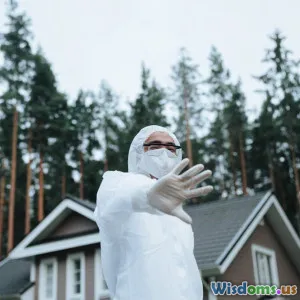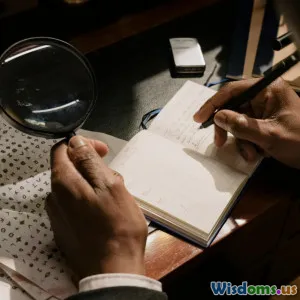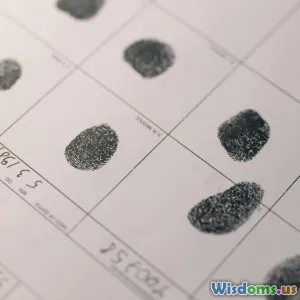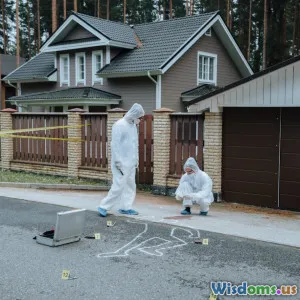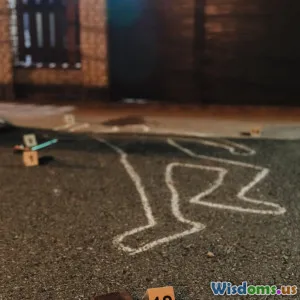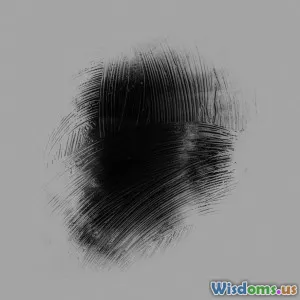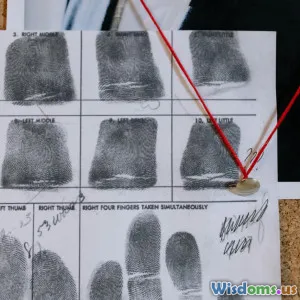
Breaking Down the Art and Science of Bloodstain Pattern Analysis
7 min read Explore the intricate blend of art and science behind bloodstain pattern analysis in crime investigations. (0 Reviews)
Breaking Down the Art and Science of Bloodstain Pattern Analysis
Blood is rarely just blood in the context of a crime scene—it is a storyteller, a silent witness that can reveal the hidden narrative behind violent events. Bloodstain pattern analysis (BPA) is the forensic discipline that deciphers this narrative. The meticulous study of the shape, distribution, and location of bloodstains allows investigators to piece together the sequence of actions that led to a crime. This technique isn’t just science; it’s an intersection of empirical analysis and interpretative art that intensifies the accuracy of criminal investigations.
Understanding Bloodstain Pattern Analysis
BPA is a forensic tool used to help reconstruct the events of a crime by analyzing the physical patterns left behind by blood. The aim is to establish the cause, manner, and mechanism of injury or death, often shedding light on crucial elements such as the position of the victim and assailant, and the type of weapon used.
What Makes BPA Both an Art and a Science?
The scientific aspect encompasses biology, physics, and chemistry to explain blood behavior under various circumstances. For example, understanding the cohesion and surface tension of blood and how gravitational forces shape drop impact “spines” and “satellite” stains requires rigorous scientific knowledge.
The artistic element emerges in the interpretation stage. Analysts visualize dynamic crime scene scenarios based on the static bloodstain evidence. This process involves a high level of creativity and intuition, developed through experience, to hypothesize events that created distinct blood patterns.
Key Types of Bloodstain Patterns and Their Significance
Bloodstains present in various forms depending on the nature of the event:
-
Passive stains: These result from the force of gravity alone—for instance, drops falling straight down from a bleeding wound. They offer insights about victim position and movement during the event.
-
Projected or impact stains: Created when force is applied to the blood source, like a gunshot or blunt trauma. The size and distribution of these tiny droplets can reveal weapon type and strike direction.
-
Transfer stains: Occur when a bloody object contacts another surface, leaving patterns such as smears or wipes. Analyzing these can illuminate interactions at the scene, like struggle or attempted cleanups.
-
Cast-off patterns: Flying droplets propelled from a bloodied object, often showing arcs or repetitive motion, useful in tracking attacker movements.
One illuminating example is the analysis of bloodstain patterns at the 2001 murder case of Swedish Prime Minister Olof Palme. Investigators used BPA to determine shots came from behind—corroborating eyewitness testimony and reconstructing the assassin’s direction.
The Scientific Process Behind BPA
Crime Scene Examination and Documentation
Bloodstain pattern analysts commence with meticulous scene examination. Photographs, sketches, and 3D scanning technology capture each bloodstain’s location and size in relation to architectural features.
Angle of Impact Determination
The shape of an elliptical bloodstain reveals the approximate angle at which the blood drop struck a surface. Using trigonometric equations, forensic experts calculate this angle, which in turn helps in reconstructing the spatial dynamics between victim and perpetrator.
Velocity and Directionality
By studying the distribution and size of droplet patterns, analysts can ascertain the force behind blood projections. High-velocity spatter with mist-like droplets typically indicates gunshot wounds, while larger drops indicate lower-velocity blunt trauma.
Advanced Techniques: From Chemicals to Digital Modeling
Besides pattern mapping, BPA employs chemical reagents such as luminol to detect latent blood traces, invisible to the naked eye. Digital tools provide simulation capabilities, offering step-by-step re-enactments to test hypotheses against observed data.
Challenges and Controversies in BPA
While powerful, BPA is not without limitations. Critics point to subjective interpretation risks and call for standardized methodologies to improve reproducibility.
A landmark example is the post-conviction review of the Casey Anthony trial, where flawed blood spatter interpretations were brought into question, highlighting the need for expert reliability and procedural rigor.
BPA’s Role in Modern Forensics and Legal Implications
In courtrooms, BPA serves both prosecution and defense, bridging scientific evidence with narrative reconstruction. Properly conducted analysis can validate eyewitness accounts or expose inconsistencies—critical for just verdicts.
Law enforcement agencies increasingly integrate bloodstain analysis with DNA examination, bringing richer context to forensic data. The National Forensic Science Technology Center reports that BPA findings influence over 4,000 homicide cases annually in the United States alone.
Conclusion
Bloodstain pattern analysis epitomizes the fusion of empirical science with interpretive skill in crime scene investigation. It transforms invisible threads into coherent stories, guiding investigators through the complex truth behind violent incidents. As forensic technology evolves, so too does BPA’s precision, safeguarding justice through a remarkable synergy of art and science.
The discipline calls for passionate analysts who not only master technical principles but also embody the creativity to read blood’s silent testimony—because in the end, every stain might save a life through the pursuit of truth.
Rate the Post
User Reviews
Popular Posts










